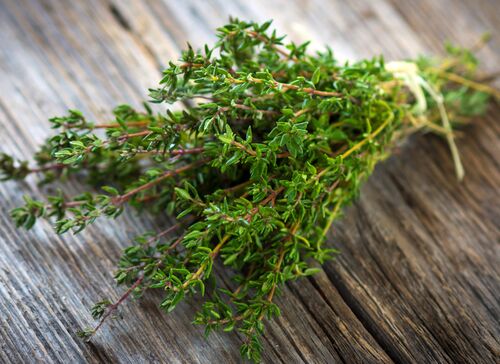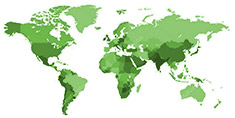Planting and Sowing of Winter Thyme

Thyme belongs to the group of Mediterranean herbs and, besides being a popular kitchen herb, is also known for its medicinal benefits. Even in ancient times, thyme was used as a remedy for all kinds of aches and pains. For instance, it helps against colds. Consider, for example thyme syrup.
Thyme is easy to grow, even for beginning gardeners. And it attracts many insects due to its strong smell.
Growing thyme from seeds
Thyme belongs to the Lamiaceae family. There are all kinds and varieties, used both in the kitchen and in traditional medicine.
It is an easy-to-grow herb, requiring little care. The most important thing is a sunny spot. Some varieties are hardy.
Sowing and planting of thyme
Thyme grows very slowly. It is therefore recommended to pre-sow indoors. This can be done from February onwards. The germination time varies per seed, so some sprout faster than others.
From mid-May, when no more night frost is predicted, the plants can be planted out in the garden. Keep a planting distance of about 20 cm. Thyme also does well in pots.
Position and soil for growing Thyme
The soil should be dry and poor. The woody, low-growing, perennial plant likes to grow in the sun. Therefore, sow it in a light, sheltered and warm place.
How to care for your thyme plants
The maintenance of this perennial plant, which develops woody branches over time, is simple. Regular pruning is important to prevent the shoots from becoming woody too rapidly and it makes the plant bushier. It needs very little water and no fertiliser. To overwinter the plant, it is important to protect it from the cold. This can be done, for example, by covering the soil with mulch or protecting the plant with plant or horticultural fleece.
When and how to harvest thyme?
You can harvest fresh thyme all year round, but at certain moments the aroma is particularly good. Especially if you want to store thyme, by drying it, it is important to pick at precisely those times. The essential oil content is highest just before flowering. This can vary from variety to variety and is often the case from May to October. Harvest late in the morning or early in the afternoon. This because by then the dew has disappeared but the sun has not yet had a chance to evaporate the essential oils. The flowers are edible, so they can also be harvested.
How to preserve thyme
Thyme can be stored in different ways. In the fridge, in it keeps for several days. You can also freeze thyme and dry it.
You can dry it, for example in a food dryer or air-dry it by hanging bunches of thyme in a dark, dry and airy place. Dried thyme, if stored properly, has a long shelf life.
Is thyme healthy?
Thyme is a medicinal herb. The essential oil of the plant, has anti-inflammatory and antibacterial properties. Thanks to its expectorant and cough-relieving properties, thyme is widely used in remedies for respiratory diseases. For example, it is used in cough syrup. Thyme has also other medicinal effects, such as stimulating digestion.
Thyme seeds in our collection
In our range, we have several varieties of thyme. A number of herb seed packages also include thyme seeds.
Tips to grow thyme
- Thyme can be used in various ways. Besides adding the herb to several dishes, you can for instance use it to make herbal tea.
- The flowers are also edible. They can be used fresh in herb butter and tea. The flowers can be dried.
- Thyme can be used to make your own cough syrup. Several recipes can be found on the internet.



